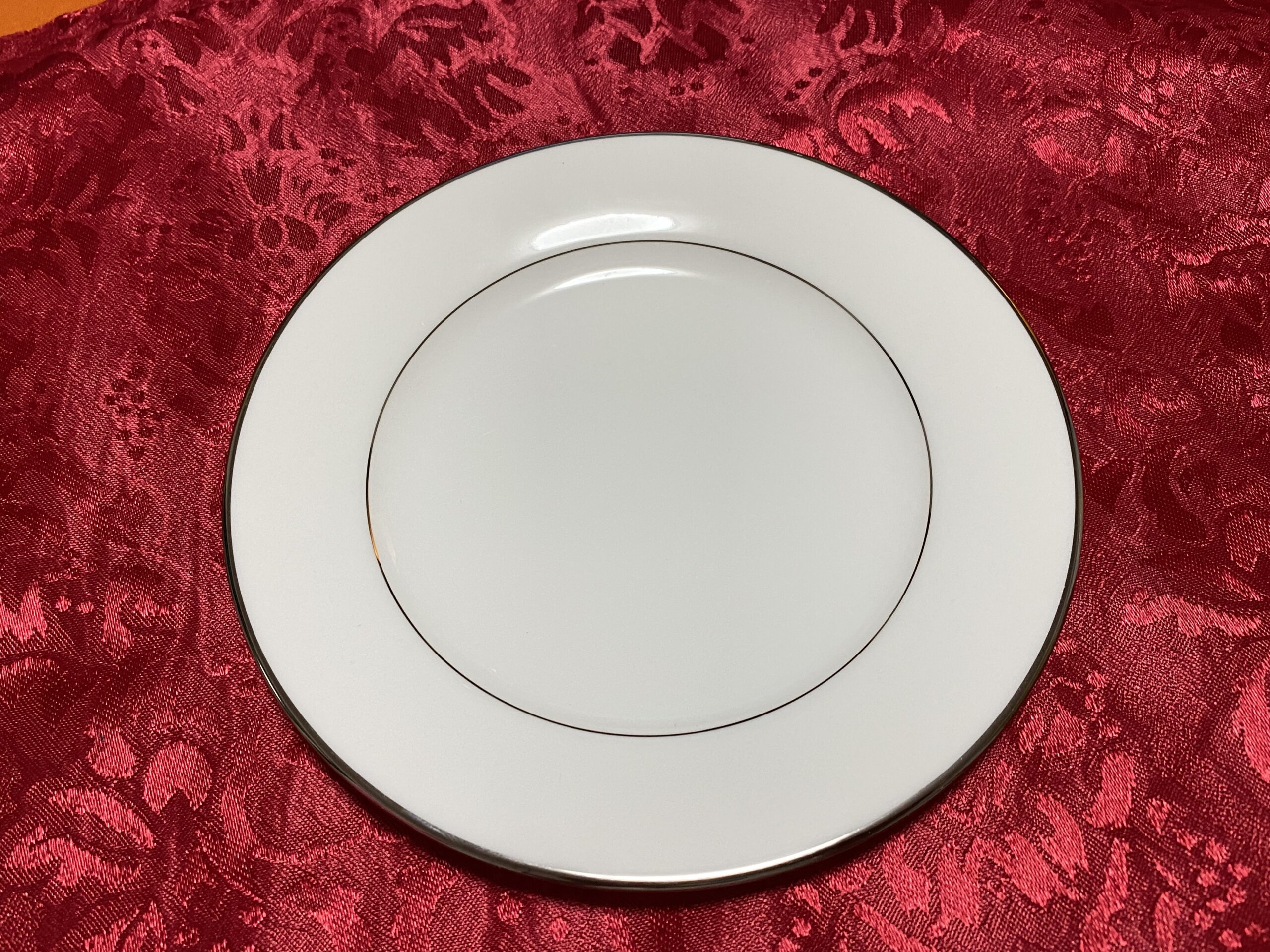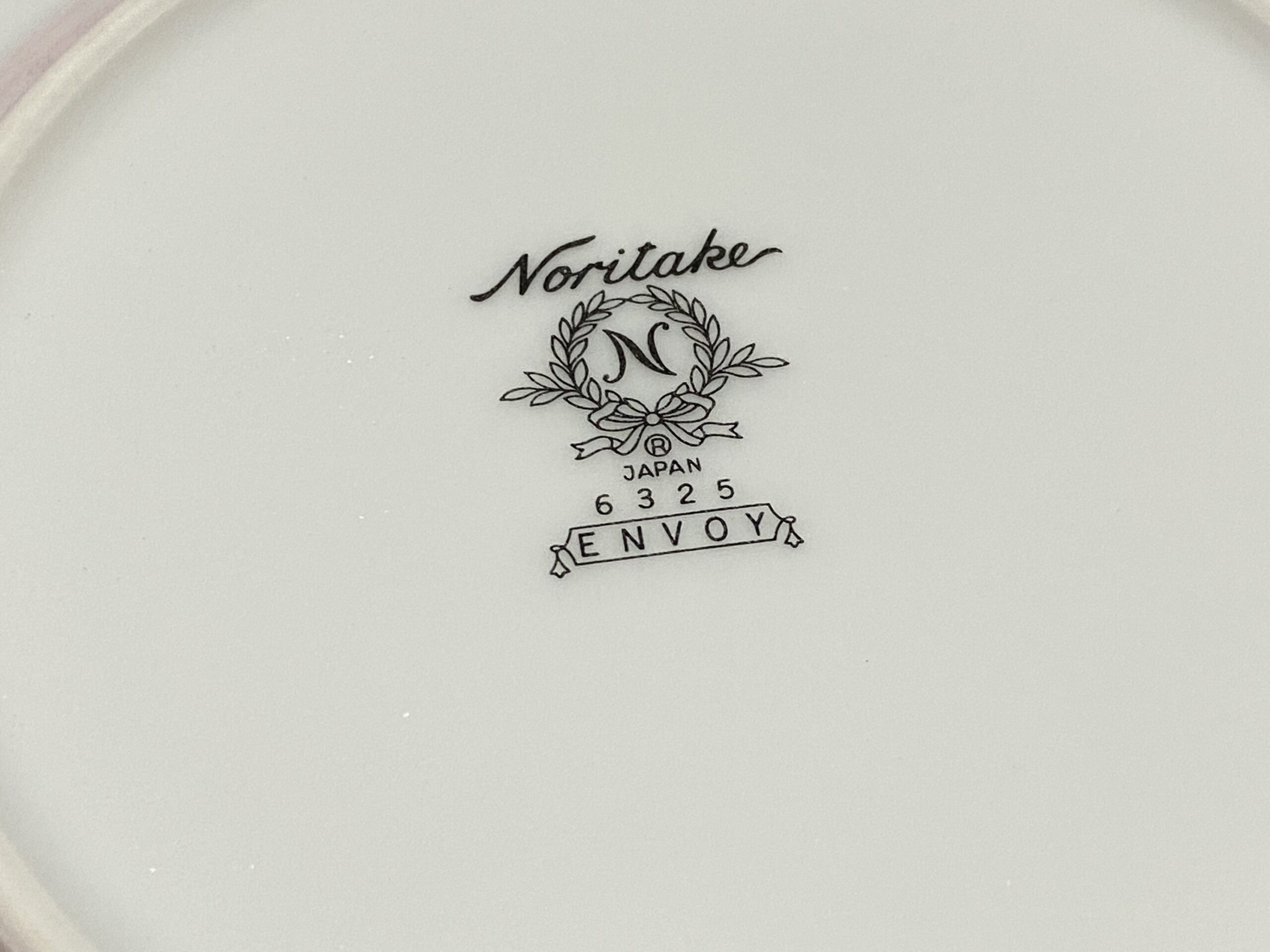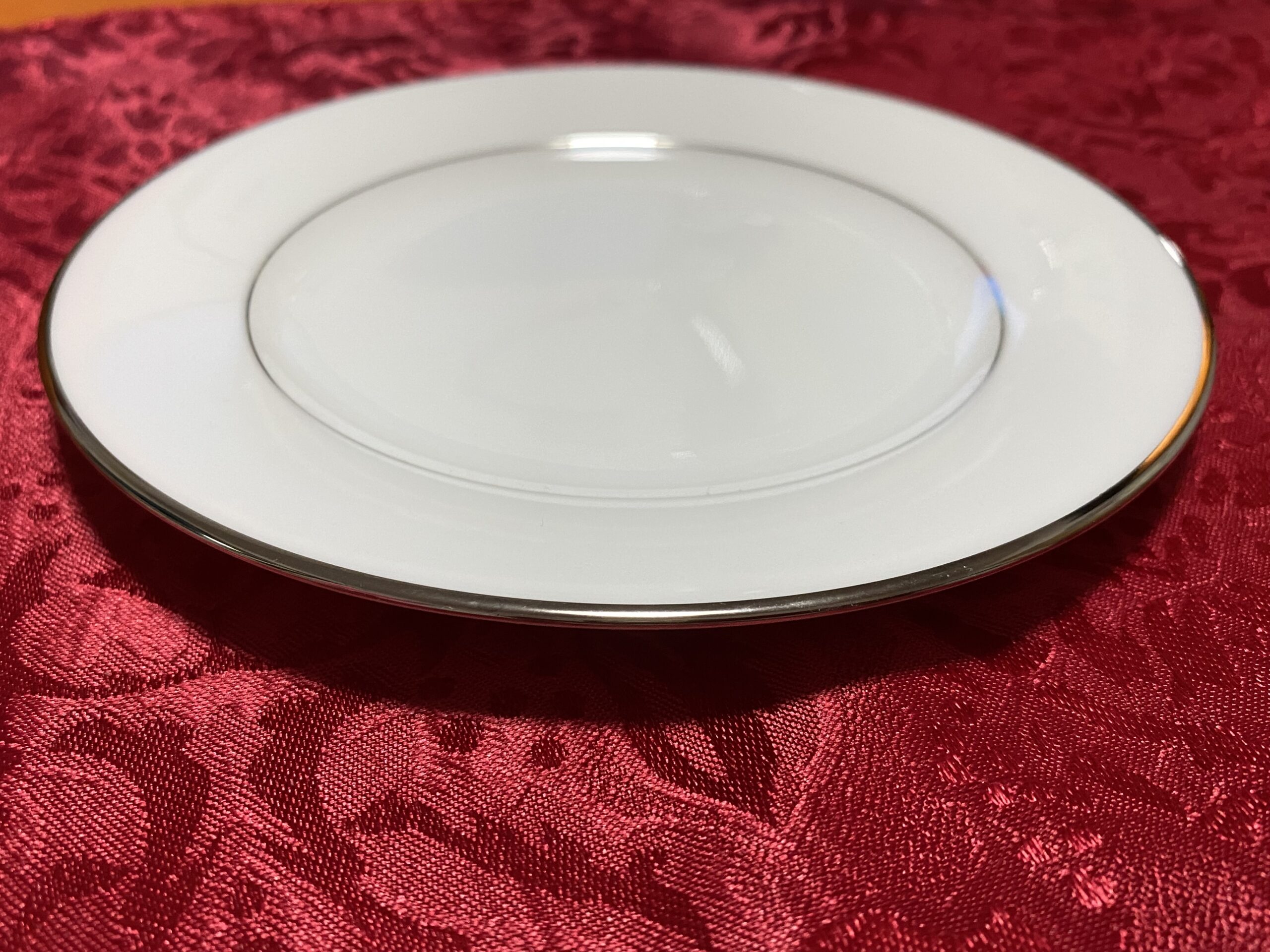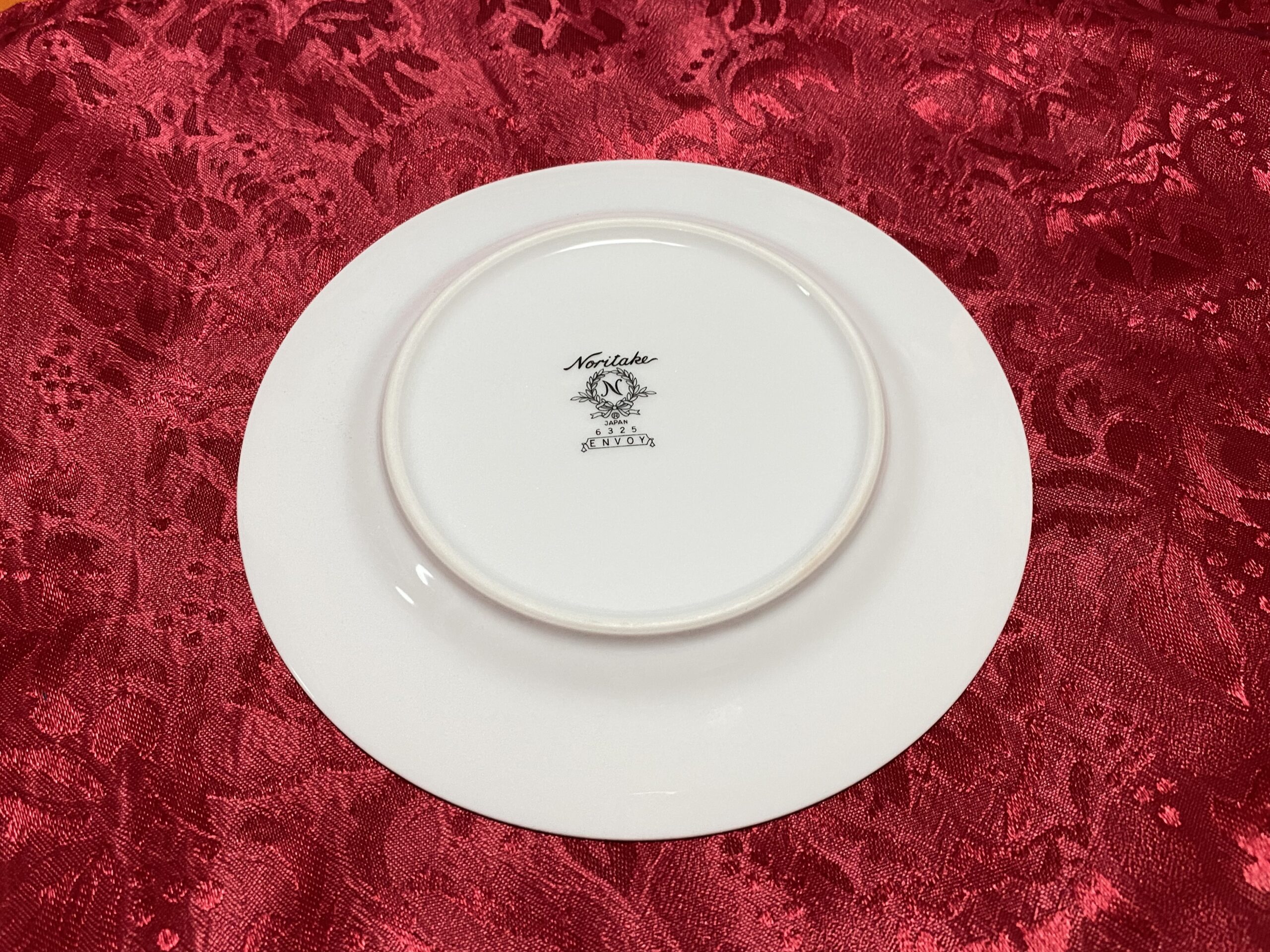Noritake Envoy Platinum-edged China, Made in Japan: 2,509 ppm Lead in the back-mark/logo
For those new to the Lead Safe Mama website:
Tamara Rubin is a multiple-federal-award-winning independent advocate for childhood Lead poisoning prevention and consumer goods safety, and a documentary filmmaker. She is also a mother of Lead-poisoned children (two of her four sons were acutely Lead-poisoned in 2005).
- Tamara owns and runs Lead Safe Mama, LLC — a unique community collaborative woman-owned small business for childhood Lead poisoning prevention and consumer goods safety.
- Since July 2022, the work of Lead Safe Mama, LLC has been responsible for six product recalls (FDA and CPSC).
- All test results reported on this website are science-based, accurate, and replicable.
- Please check out our press page to see some of the news coverage of our work, linked here.
Below you will find the XRF readings for metals found for the item pictured. All readings are done multiple times to confirm the results for each component before sharing one full set of the readings for the item pictured. Results are replicable, science-based and accurate.
For some additional background about this work, please read the following links:
- An article discussing the testing methodology used here on this website.
- A menu with buttons for many of the different categories of information that can be found here on LeadSafeMama.com.
- A link to my documentary feature film on childhood Lead poisoning.
- The short video that shows you how to search this site.
- Items you can test at home with a LeadCheck swab.
- Items you really cannot test at home (items better tested with XRF technology)
- A piece discussing some of the context for the concern of Lead in ceramics / dishware / pottery
- A overview discussing why you cannot (in most cases) test dishware yourself at home.
Reading #1.) Center of Noritake silver edge plate
60-second reading
- Lead (Pb): 17 +/- 3 ppm
- Cadmium (Cd): 6 +/- 2 ppm
- Mercury (Hg): non-detect
- Bromine (Br): non-detect
- Chromium (Cr): non-detect
- Iron (Fe): 1,881 +/- 65 ppm
- Zinc (Zn): 364 +/- 13 ppm
- Indium (In): 4 +/- 3 ppm
- Tin (Sn): 12 +/- 3 ppm
- W: 35 +/- 21 ppm
- Platinum (Pt): 26 +/- 12 ppm
- Bismuth (Bi): 38 +/- 4 ppm
- No other metals were detected in consumer goods mode.
Reading #2.) Silver trim of Noritake silver edge plate
30-second reading
- Lead (Pb): non-detect
- Cadmium (Cd): 11 +/- 3 ppm
- Mercury (Hg): non-detect
- Bromine (Br): non-detect
- Chromium (Cr): non-detect
- Iron (Fe): 3,338 +/- 128 ppm
- Zinc (Zn): 952 +/- 34 ppm
- Indium (In): 8 +/- 4 ppm
- Tin (Sn): 16 +/- 5 ppm
- Gold (Au): 1,336 +/- 44 ppm
- Bismuth (Bi): 83 +/- 8 ppm
- No other metals were detected in consumer goods mode
Reading #3.) Logo area of Noritake plate
40-second reading
- Lead (Pb): 2,509 +/- 38 ppm
- Cadmium (Cd): 5 +/- 2 ppm
- Mercury (Hg): non-detect
- Bromine (Br): non-detect
- Chromium (Cr): non-detect
- Manganese (Mn): 271 +/- 80 ppm
- Iron (Fe): 4,644 +/- 118 ppm
- Cobalt (Co): 2,166 +/- 70 ppm
- Zinc (Zn): 371 +/- 16 ppm
- Tin (Sn): 12 +/- 4 ppm
- Platinum (Pt): 72 +/- 20 ppm
- Bismuth (Bi): 17 +/- 7 ppm
- No other metals were detected in consumer goods mode
Some additional reading that may be of interest:
- Here are some additional Noritake pieces we have tested.
- Here’s our overview with other types of china we have tested.
- Here’s the “Made in Japan” category on the site.
- Other examples of Platinum-edged china I have tested.
As always, please let me know if you have any questions. Thank you for reading and thank you for sharing this work.
Tamara Rubin
#LeadSafeMama

Never Miss an Important Article Again!
Join our Email List









Using these grease marks as hallmark has become common practice. When considering 5o buy dishes take your finger nail and see if the hallmark seems permanent. If you buy and the mark comes off in the first year of owning the dishes do return the dishes.
HI.. I have a few of those plates. What does the reading mean.?